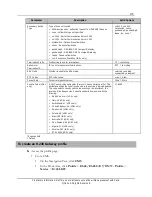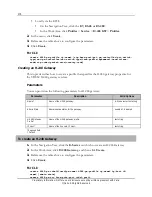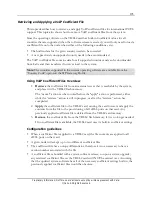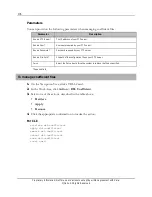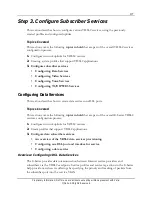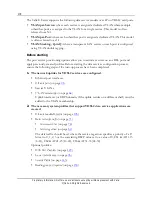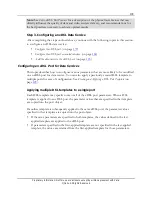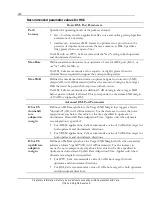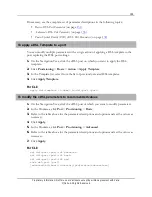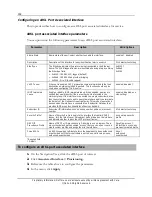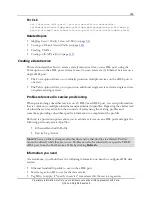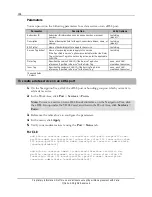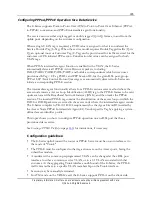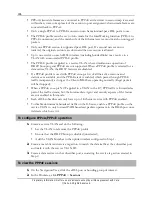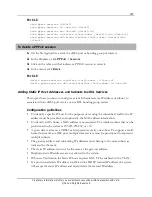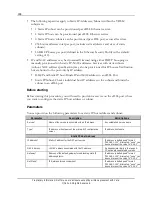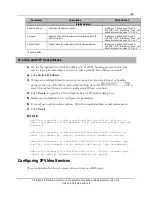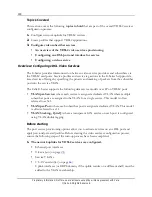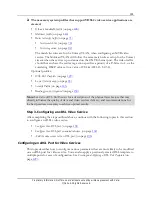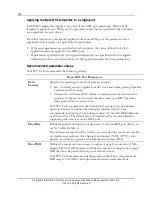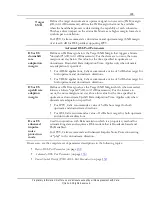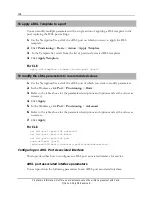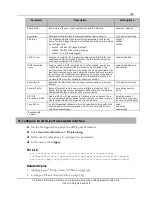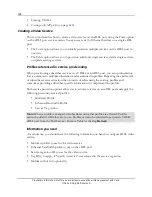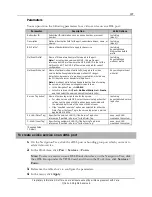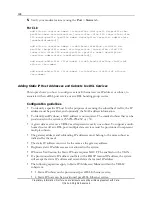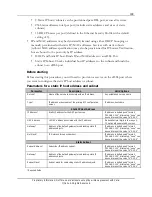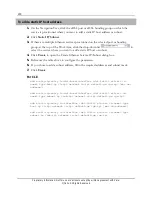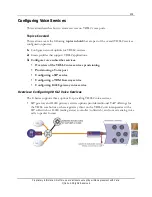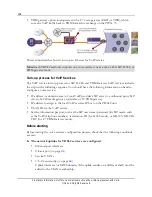
187
Proprietary Information: Not for use or disclosure except by written agreement with Calix.
© Calix. All Rights Reserved.
For CLI:
show pppoe sessions [detail]
show pppoe sessions id <ses-id> [detail]
show pppoe sessions mac <m-add> [detail|id]
show pppoe sessions interface <intfc-name> [detail|vlan <vlan-id>]
show pppoe sessions dsl-bond-interface <intfc-name> [detail|vlan
<vlan-i>]
To delete a PPPoE session
1.
On the Navigation Tree, click the xDSL port or bonding group of interest.
2.
In the Workarea, click
PPPoE
>
Sessions
.
3.
Click on the table row that indicates a PPPoE session to select it.
4.
In the menu, click
Delete
.
For CLI:
delete pppoe sessions interface <intfc-name> id <ses-id>
delete pppoe sessions dsl-bond-interface <intfc-name> id <ses-id>
Adding Static IP Host Addresses and Subnets to xDSL Services
This topic shows you how to configure a static Ethernet service IP address or subnet, to
associate with an xDSL port service or an xDSL bonding group service.
Configuration guidelines
To identify a specific IP host for the purposes of securing the subscriber’s traffic, the IP
address must be provided, and optionally, the MAC address information.
To identify an IP subnet, a MAC address is not required. The smallest subnet that can be
provisioned in the system is 255.255.255.252, or /30.
A given data service on a VDSL2 card represents exactly one subnet. To support a multi-
homed router off an xDSL port, multiple data services must be provisioned to represent
multiple subnets.
The gateway address and subtending IP addresses must belong to the same subnet as
indicated by the mask.
The static IP address must not be the same as the gateway address.
Duplicate static IP addresses are not allowed in the system.
IP Source Verification for Static IP hosts requires MAC FF be enabled on the VLAN.
If a provisioned static IP address conflicts with a DHCP learned IP address, the system
will accept the static IP address and reject/delete the learned IP address.

